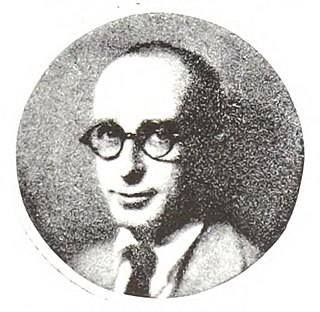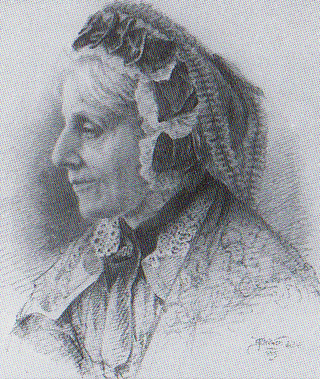
Norfolk is an independent city in Virginia, United States. As of the 2020 census, Norfolk had a population of 238,005, making it the third-most populous city in Virginia after neighboring Virginia Beach and Chesapeake, and the 96th-most populous city in the nation. Norfolk holds a strategic position as the historical, urban, financial, and cultural center of the Hampton Roads region, which has more than 1.8 million inhabitants and is the 37th-largest metropolitan area in the U.S., with ten cities.

Wilson Cary Nicholas was an American politician who served in the U.S. Senate from 1799 to 1804 and was the 19th Governor of Virginia from 1814 to 1816.

James Edward Abbe was an American photographer.

The Waterside, is a festival marketplace on the Elizabeth River in downtown Norfolk, Virginia, opened June 1, 1983. While the Waterside Annex was demolished May 16, 2016, the main portion was renovated and reopened as Waterside District in May 2017.

Benjamin Watkins Leigh was an American lawyer and politician from Richmond, Virginia. He served in the Virginia House of Delegates and represented Virginia in the United States Senate.

Allen Taylor Caperton was an American politician who was a United States senator from the State of West Virginia in 1875–1876. He was a member of the Democratic Party. He had been in the Virginia House of Delegates and Virginia Senate before the American Civil War. During the Civil War, he was a Confederate States senator.

Sir Charles Dalrymple, 1st Baronet, was a Scottish Conservative politician.

The Martineau family is an intellectual, business and political dynasty associated first with Norwich and later also London and Birmingham, England. Many members of the family have been knighted. Many family members were prominent Unitarians; a room in London's Essex Hall, the headquarters building of the British Unitarians, was named after them. Martineau Place in Birmingham's central business district was named in their honour.

Samuel Northrup Castle was a businessman and politician in the Kingdom of Hawaii.

Our Nig: Sketches from the Life of a Free Black is an autobiographical novel by Harriet E. Wilson. First published in 1859, it was rediscovered in 1981 by Henry Louis Gates Jr. and was subsequently reissued with an introduction by Gates. Our Nig has since been republished in several other editions. It was long considered the first novel published by an African-American woman in North America, though that record is now contested by another manuscript found by Gates, The Bondwoman's Narrative, which may have been written a few years earlier.
The Battle of Pig Point was an early naval battle of the American Civil War, after Lincoln had extended the Union blockade to include Virginia. On June 5, 1861, the Union gunboat USRC Harriet Lane under Captain John Faunce was ordered to attack Pig Point, but due to shallow water, the shots fell short, and the Union suffered five men wounded before withdrawing.

Wilson Selden Washington was a realtor and Democratic member of the Virginia House of Delegates.
Bon Secours DePaul Medical Center was a historical, general medical and surgical hospital located in Norfolk, Virginia and affiliated with the Bon Secours Health System.

Oliver Spencer Glisson, was a rear admiral of the United States Navy. After commanding a schooner in the Mexican–American War, he was posted to the East India Squadron and took part in the Japan Expedition when the first treaty with the Japanese was signed by Commodore Matthew Perry in 1853. Throughout the American Civil War, Glisson served in the North Atlantic Blockading Squadron, intercepting illegal trade across the Potomac, and patrolling the mouth of the Rappahannock. Early in the war, Glisson rescued a group of slaves who were being used by the Confederates as a human shield. Although this rescue contravened the Fugitive Slave Act, it was authorised by Secretary of the Navy Gideon Welles on humanitarian grounds.

Harriet Forten Purvis was an African-American abolitionist and first generation suffragist. With her mother and sisters, she formed the first biracial women's abolitionist group, the Philadelphia Female Anti-Slavery Society. She hosted anti-slavery events at her home and with her husband Robert Purvis ran an Underground Railroad station. Robert and Harriet also founded the Gilbert Lyceum. She fought against segregation and for the right for blacks to vote after the Civil War.

Emily Stannard, who from 1826 called herself Mrs Joseph Stannard, was a British still life painter. She was associated with the Norwich School of painters, Britain's first provincial art movement. Along with her niece Eloise Harriet Stannard, she is considered to be the most accomplished British female still life artist of the 19th century.
Thomas Mason was an American colonial politician who represented Norfolk County in the House of Burgesses in 1696-1697, although his father Colonel Lemuel Mason had served multiple terms representing that county and nearby Lower Norfolk County.
Scipio Vaughan was an African-American artisan and slave who inspired a "back to Africa" movement among some of his offspring to connect with their roots in Africa, specifically the Yoruba of West Africa in the early 19th century. After gaining his freedom, he spent the latter part of his life in the United States and started the movement with his immediate family members in his final moments. Several generations of Scipio's descendants are dispersed across three continents where they mostly live or lived, except for occasional cousin reunions, which includes people from Nigeria, Sierra Leone, Liberia, Ghana and Tanzania in Africa; Jamaica and Barbados in the Caribbean; the United States and Canada in North America; and the United Kingdom in Europe.

Toy Dixon Savage Jr. was an American lawyer and politician who represented Norfolk in the Virginia House of Delegates.















